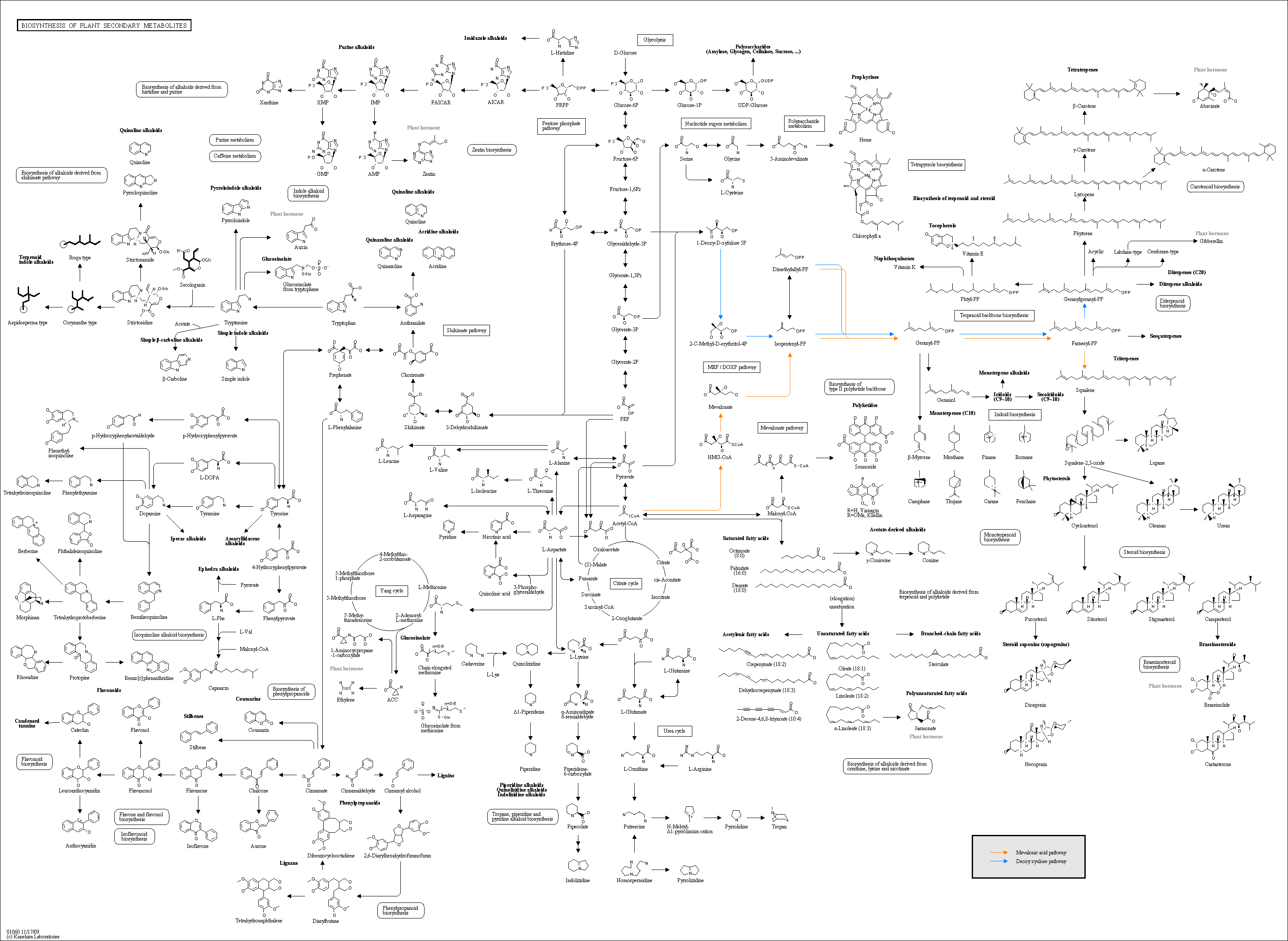Biosynthesis of Secondary Plant Metabolites
Description: Secondary plant metabolites do not play a direct role in the central needs of a cell, but they add support in special cases that cells encounter. They can help with defense of a plant cell or can be used for various things in humans. The amounts and variations of secondary plant metabolites that are produced are specific to each of the different organisms of plants.
The biosynthesis of secondary plant metabolites begin with the creation of primary metabolites. These are produced through various pathways, mainly the TCA cycle and Shikimate pathway. From there, it depends on which secondary metabolite is being produced as to which substrates and enzymes are needed to finish the synthesis of the secondary metabolites. There are several different locations where the biosynthesis can occur, which also depends on which secondary metabolite is being produced. The locations of biosynthesis are the cytosol, chloroplasts, mitochondria, vesicles, and the endoplasmic reticulum.

Related BMRB Molecules
- cis-Aconitic Acid
- L-Alanine
- AMP
- Anthranilic Acid
- L-Arginine
- L-Asparagine
- L-Aspartic Acid
- beta-Carotene
- Cadaverine
- Chalcone
- Chorismic Acid
- Cinnamaldehyde
- trans-Cinnamic Acid
- Cinnamyl Alcohol
- Citrate
- Coumarin
- L-Cysteine
- Dopamine
- D-Fructose-6-Phosphate
- D-Fructose-1,6-Bisphosphate
- Fumaric Acid
- D-Glucose
- alpha-D-Glucose-1-Phosphate
- D-Glucose-6-Phosphate
- L-Glutamine
- L-Glutamic Acid
- D-3-Phosphoglyceric Acid
- Glycine
- L-Histidine
- L-Isoleucine
- Jasmonic Acid
- alpha-Ketoglutaric Acid
- L-Leucine
- Linoleic Acid
- L-Lysine
- L-Malic Acid
- L-Methionine
- S-Adenosyl-L-Methionine
- 1,2,3,4-Tetrahydronaphthalene
- Niacin
- Octanoic Acid
- L-Ornithine
- Palmitic Acid
- L-Phenylalanine
- Phosphoenolpyruvic Acid
- DL-Pipecolic Acid
- Prephenic Acid
- Putrescine (1,4 Diaminobutane)
- Pyridine
- Pyruvic Acid
- 3,4-Hydroxyphenyl Pyruvate
- Quinolinic Acid
- L-Serine
- Shikimic Acid
- beta-Sitosterol
- Squalene
- Stearic Acid
- Stigmasterol
- Succinic Acid
- L-Threonine
- Tryptamine
- L-Tryptophan
- Tyramine
- L-Tyrosine
- L-Valine
- Xanthine
For complete information about pathway, see KEGG [map01060]
